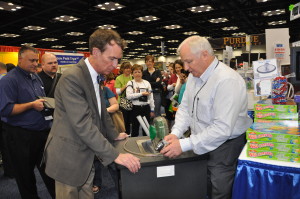 by: Priscilla Robinson
by: Priscilla Robinson
Talking about Infectious Disease
These days, it’s hard not to hear reports about the spread of infectious disease, from serious viruses like Ebola to the “common” cold. There are ads for flu shots and cold remedies, nightly media coverage about rampant epidemics all over the world, and pundits predicting whether these contagious diseases might someday get to this country.
So how is this affecting your students? Are they asking questions? Are they anxious about where these germs may be lurking, and whether they or their families are in any danger?
As a teacher, I’ve found that the science classroom is the perfect environment to help students understand the world around them.
A few years ago, my students and I survived an outbreak of the Swine Flu. So many kids were getting sick that our school had to establish a quarantine room to isolate ill students until their parents could pick them up. During this time, I set up stringent hand-washing techniques for students (and myself), as well as protocols for disinfecting desks, chairs and door handles. Ultimately, my students had a lower rate of absences than their peers, and I stayed healthy as well.
Below you’ll find two fun and engaging classroom activities related to infectious disease transmission and prevention. Try them with your students! Read the rest of this entry »



 Posted by Donna Giachetti
Posted by Donna Giachetti  by: Donna Giachetti
by: Donna Giachetti
 by: Tami O’Connor
by: Tami O’Connor

